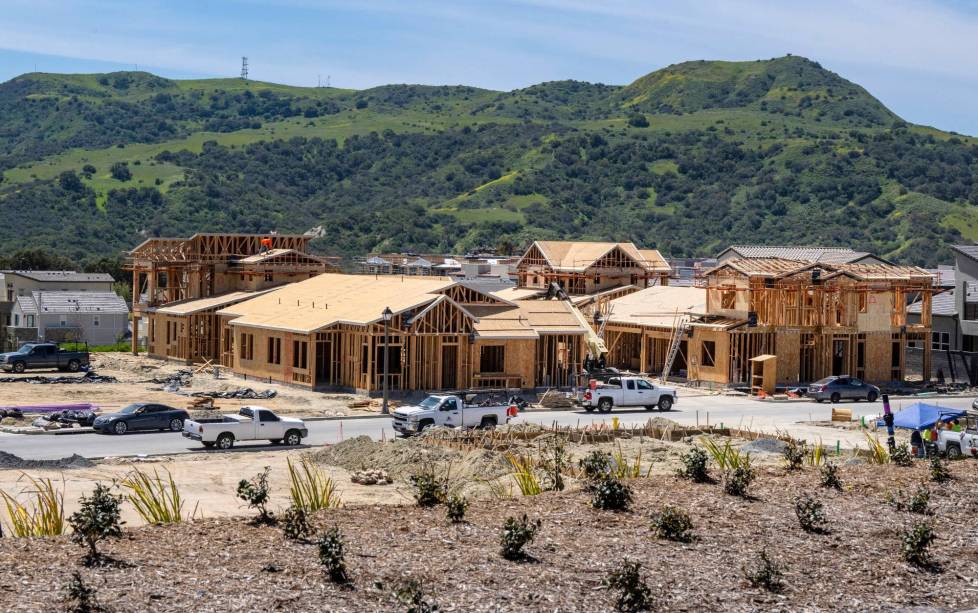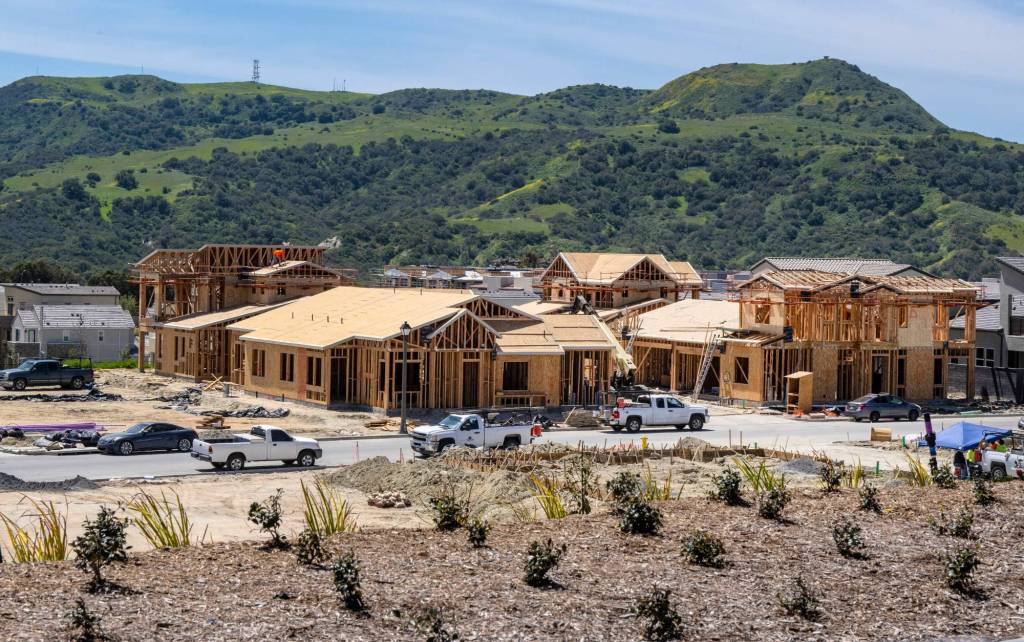
Homes and open space in Rancho Mission Viejo Friday, April 7, 2023. The county has been tasked with planning the development of more than 10,000 new homes, many at affordable levels, in the unincorporated territory of OC . However, leaders are running into conflicts with the fight in some areas as fire insurance is available at reasonable prices. (Photo by Mark Rightmire, Orange County Register/SCNG)
Orange County is responsible for planning thousands of housing units in unincorporated territories to help meet the state’s housing needs, but identifying fire-prone areas and insurance difficulty in these areas could delay the construction of new housing here and in similar developments throughout California.
Orange County Fifth District Supervisor Katrina Foley warns that there is “a clear conflict between the state’s fire prevention maps” and the mandates the county has received from the state to plan the construction of 10,340 new homes in the unincorporated areas of OC it governs. Areas that are not yet developed mostly clash with the foothills and wild lands of OC, which can make it difficult to obtain the necessary insurance, both for builders and later for owners.
“It has come to my attention that the building has come to a halt,” Foley said recently. “Everyone is on hold until we can resolve this insurance issue.”
State law requires California cities and counties to develop housing plans at all income levels, including sufficient affordable housing. They are not responsible for building the homes, just creating a conducive planning environment for developers who may show interest. State housing officials must approve their zoning plans.
As of April 19, there were 19 towns in Orange County, including the county, that were not in compliance with having an approved plan in place, according to California Housing and Community Development. Failure to adopt a compliant housing feature could result in state lawsuits, loss of local control over development decision-making, and fines of up to $600,000 per month.
At the same time, where the state is responsible for firefighting, the California Fire Marshal is mandated to map properties into areas of moderate, high, or very high fire danger severity. And the maps were recently updated for the first time since 2007.
The hazard – note, not the risk – is based on the physical conditions that create a probability and the expected behavior of fire, without regard to safety measures such as building homes with more heat resistant materials.
Lori Smith, fire marshal and deputy chief of the Orange County Fire Authority, said people are concerned that if their homes or developments fall into the highest fire risk areas on the map, their premiums insurance would increase or be cancelled.
“Since those fires we had up north in 2017, 2018, insurance companies have canceled people’s home insurance (or) they’re just leaving the state,” Smith said. “People in Orange County, as well as across the state, are really having a hard time getting fire insurance if they can get it, or are having a hard time getting insurance.”
Dan Dunmoyer, president and CEO of the California Building Industry Association, said access to homeowners insurance was hard to come by due to the state’s devastating wildfires.
“The insurance industry has suffered substantial losses,” he said. “The only way for insurers to respond to this, other than losing money they don’t want to make, is to simply limit the scope of their covers, not to renew their existing covers if they think ‘they’re too big of a fire risk, or they just don’t sell new insurance.
Dunmoyer said that due to the insurance crisis, construction in less developed areas has been slowed as home builders cannot figure out how to insure them at an affordable price for a first-time customer. In particular, he pointed to multi-family condominium projects as being affected.
“It’s obviously very problematic because it’s the type of product that our entry-level buyers can afford,” Dunmoyer said. “It’s also the product that allows us to build more homes on less land, which is better for the environment and better for our climate goals. We need to find a solution here so that we can actually solve our housing crisis and solve our climate crisis and create a California that we all want to create where people can have a place to call home, affordably, in a beautiful place and always respectful of the environment.”
Mike Balsamo, senior vice president of Rancho Mission Viejo, which is still developing a part of southern Orange County that was once a rolling ranch with thousands of homes starting in the $500,000s, said, “It’s not not possible to quantify exactly how much homes are affected by this statewide insurance crisis.
“We are working with others in our industry to resolve this complex issue with the goal of bringing major property insurers back into the state,” he said. “We know that Rancho Mission Viejo is a very resilient community that is a model for wildfire safety and prevention.”
If not fixed, Dunmoyer said first-time buyers who cannot afford skyrocketing insurance premiums could be shut out of the homeownership market.
“There are dozens of other projects that are in jeopardy and the sad thing about it is that it’s not in jeopardy for million dollar homes,” Dunmoyer said. “The irony is that this is in jeopardy for condominiums, which are the most affordable housing we build in California, and where low-income families and primarily families of color in our state buy their first homes.”
But Michael Soller, California’s deputy insurance commissioner, said updating CalFire maps is unlikely to contribute substantially to the rising cost of insurance.
“And it’s for a simple reason. Insurance companies are already using their own data to make insurance decisions,” he said. “They examine in detail what is actually happening on your property. California maps don’t do that. What CalFire does is really about education.
Insurance companies are solely responsible for setting their rates and prices, Soller said. It’s then up to the Department of Insurance to make sure those rates are fair and that Californians can get the best value, he added.
“We may adjust these rates if we find that they are excessive, inadequate or discriminatory in any way,” Soller said.
